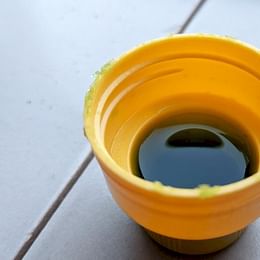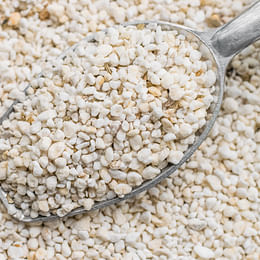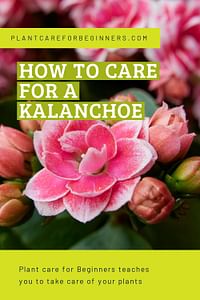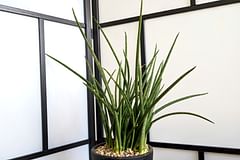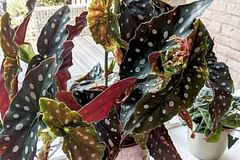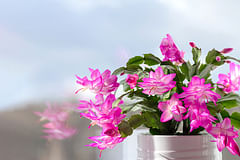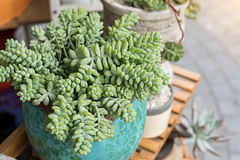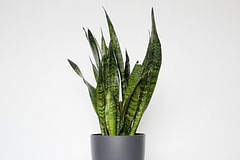How to care for a Kalanchoe
Wondering how to take care of your Kalanchoe? In this plant care guide, we're going to look at everything you need to know to successfully take care of your Kalanchoe, from watering frequency to light requirements.
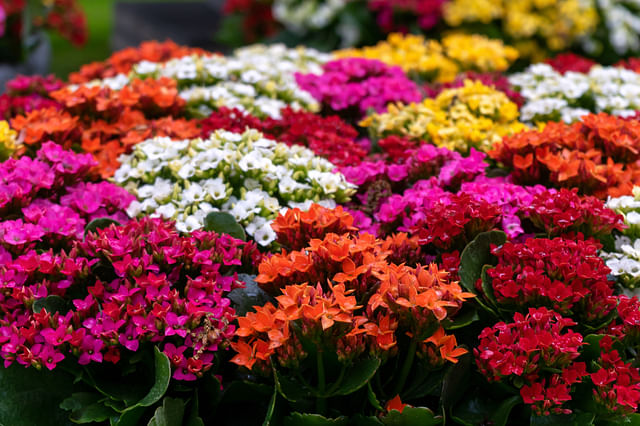
If you're new to houseplants, the Kalanchoe is a great one to start with. They are easy to care for and can tolerate a variety of environments.
Kalanchoes are very low-maintenance plants that grow beautiful flowers! Kalanchoes grow many different colored flowers, so there is always a Kalanchoe with colors that work for you and your living spaces! The best part about these plants? They grow best if you forget about them! It's better to forget to take care of these plants for weeks than to water them every week.
In this plant care guide, we will look at the basics of caring for a Kalanchoe, so you can keep your plant healthy and looking beautiful!
These are the topics we'll look at in this plant care guide:
Let's answer these questions and learn how we can take care of your Kalanchoe to help it thrive!
How often should I water my Kalanchoe?
The Kalanchoe is a succulent-like plant with thick, fleshy stems and leaves. These stems and leaves store a lot of moisture, so they can keep themselves hydrated for several weeks before you need to water them.
How often you'll need to water them depends on the type of Kalanchoe you have and the potting mix and container size. Most Kalanchoes need to be watered every one to two weeks. It's important to let the potting mix dry out completely before watering again. If you're unsure whether or not your plant needs water, try sticking your finger into the top inch of potting mix. If it feels dry it's time to water your plant.
How do I prevent overwatering my Kalanchoe?

Preventing overwatering in Kalanchoe plants is important to keep them healthy. They are succulents that store water in their leaves and need less water than most other plants. Overwatering can lead to root rot and other issues.
Here are some tips to prevent overwatering:
1. Check the soil before watering
Only water your Kalanchoe when the top inch of the soil feels dry. Stick your finger into the soil; if it feels dry at about an inch deep, it's time to water. If it still feels moist, wait a few more days before checking again.
2. Use well-draining soil
Make sure your Kalanchoe is planted in well-draining soil that allows excess water to escape quickly. A cactus or succulent potting mix is ideal because it is formulated to prevent water retention. (in another section you say general potting mix?)
3. Ensure proper drainage
Use pots with drainage holes at the bottom. This is important for allowing any excess water to drain out, preventing water from pooling at the bottom of the pot, which can cause root rot.
4. Water thoroughly but infrequently
When you do water, do so thoroughly until water runs out of the drainage holes, then allow the soil to dry out between waterings. This mimics the natural dry and wet cycles the plant would experience in its native habitat.
5. Be mindful of seasonal changes
Kalanchoe plants typically need less water during the winter months when they're dormant. During this time, reduce the frequency of watering.
6. Monitor environmental conditions
The amount of light, humidity, and temperature can all affect how quickly the soil dries out. Plants in brighter light may need watering more frequently than those in lower light conditions.
7. Use the right container size
A pot that is too large for your Kalanchoe will hold more soil and moisture. The right-sized pot will help to avoid too much water retention in the soil.
Remember, when in doubt, it's usually better to underwater a succulent like Kalanchoe than to overwater it.
What type of light does a Kalanchoe need?
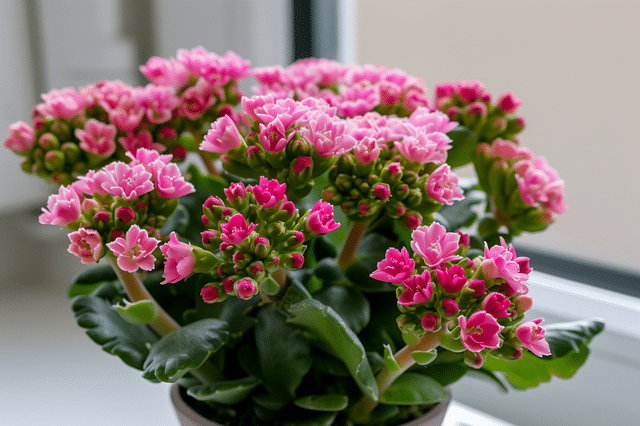
Kalanchoes might need to be watered as if they're succulents, but they don't enjoy the bright direct sunlight a regular succulent likes. Kalanchoes prefer bright, indirect sunlight. If you can't provide bright, indirect sunlight, they will also do fine in an area with filtered sunlight or partial shade.
Avoid placing your Kalanchoe in direct sunlight, because it can scorch the leaves. If you notice the leaves of your Kalanchoe starting to turn yellow, it's a sign that it's getting too much sun. Try moving your plant to a location with less direct sunlight.
The Kalanchoe prefers a bright spot because this helps it to get enough energy from the sun to grow its colorful flowers.
What are some signs that my Kalanchoe needs more light?
When your Kalanchoe doesn't get enough light, it shows signs like leggy growth - thin stems reaching for light, leaves turning pale or yellow, and slow growth. Not having sufficient light affects photosynthesis, which can slow down leaf and flower growth. To help, relocate your plant to a brighter spot for adequate indirect sunlight every day.
Temperature and humidity requirements for your Kalanchoe
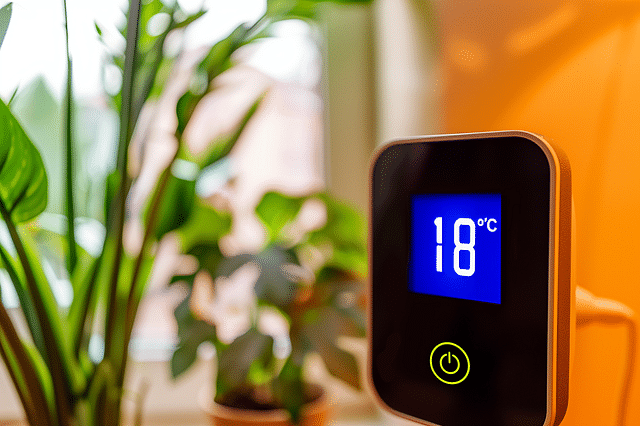
For Kalanchoe plants, it's super important to keep the temperature and humidity levels right for their health and blooming. The ideal temp range is 12-26 degrees Celsius (55-80 F). Just remember, these plants like it warmer and may not do well below 10 degrees Celsius (50 F). For the best flower production, aim for 17-20 degrees Celsius (64-68 F) day and night. Growth might slow down if it goes under 16 degrees Celsius (61 F).
Kalanchoe plants do best in spots with low to moderate humidity levels, around 40% to 60%. They don't like high humidity, so keeping them in drier areas is key. Avoid placing them in bathrooms, where it's usually more humid. By sticking to these humidity and temperature ranges, you'll help your Kalanchoe plants grow healthy, bloom beautifully, and keep their flowers longer.
How can I increase the humidity for my Kalanchoe?
Increasing humidity for your Kalanchoe can be tricky since it prefers lower to moderate levels. One way to do it is by using a humidifier to manage the air moisture directly. If you don't have a humidifier, just place the plant's pot on a tray of pebbles and water, making sure the bottom isn't soaking. Also, grouping plants can naturally up the humidity through transpiration, creating a mini humid zone. Remember, go easy on these methods to prevent too much moisture for your Kalanchoe.
Can Kalanchoe plants tolerate cold temperatures?
Kalanchoe plants can handle cold down to 45℉ (7℃) outside, ideal for warmer climates or indoor growth in cooler areas. For blooming and health, aim for 12-26℃ (55-80℉). Freezing temperatures can harm them. Florist Kalanchoe thrives at 20-38℃ (68-100℉) but needs protection from extreme cold to stay healthy.
So generally, these plants do tolerate slightly lower temperatures, but not below freezing.
What type of soil should I use for my Kalanchoe?

We've already discovered that the Kalanchoe is a plant that loves to dry out. To help with this, we'll need a type of soil to help keep the plant on the dry side.
The best type of soil to use for a Kalanchoe is a well-draining potting mix. You can find well-draining potting mixes at your local garden center or nursery. If you're using a commercial potting mix, be sure to add extra perlite to increase drainage.
You can also make your own soil mix by using equal parts of perlite, peat moss, and regular potting soil. This soil mix will keep the soil light and airy, hold onto moisture for a few days, but also drain excess moisture to the bottom of the pot quickly.
What is the best way to fertilize my Kalanchoe?
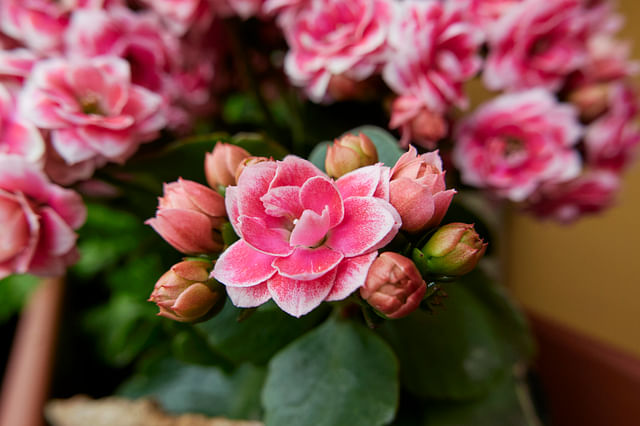
Fertilizing your Kalanchoe is important for keeping it healthy and encouraging growth. Use a balanced houseplant fertilizer and apply it according to the package directions. It's best to fertilize your Kalanchoe every two to four weeks during the growing season.
The easiest fertilizer to use is a liquid fertilizer which you can add to the water when you water your plants. Your Kalanchoe can absorb this type of fertilizer quickly and it's easy to control the dosage of your fertilizer. By controlling the dosage of the fertilizer, you're less at risk of overfertilizing your Kalanchoe and accidentally killing it.
Can I move my Kalanchoe outside in the summer?
When you live in a place that gets nice and warm in the summer, you might wonder if you can move your Kalanchoe outdoors. If it stays above 12℃ (55℉) during the night, you can keep your Kalanchoe outdoors!
When you choose to keep your Kalanchoe outdoors during the summer, there are a few things to keep in mind. Be sure to acclimate it to the outdoors slowly over seven to ten days.
Start by placing it in an area with indirect sunlight for a few hours each day. After 7 to 10 days, you can keep your Kalanchoe outdoors overnight.
Be sure to bring your Kalanchoe back indoors before the temperatures go below 12℃ (55℉) during the night. Also, if you live in an area that can get quite a bit of rain, even during the summer, it might be better to keep your Kalanchoe indoors or place it in a covered spot.
When is the best time to prune my Kalanchoe?
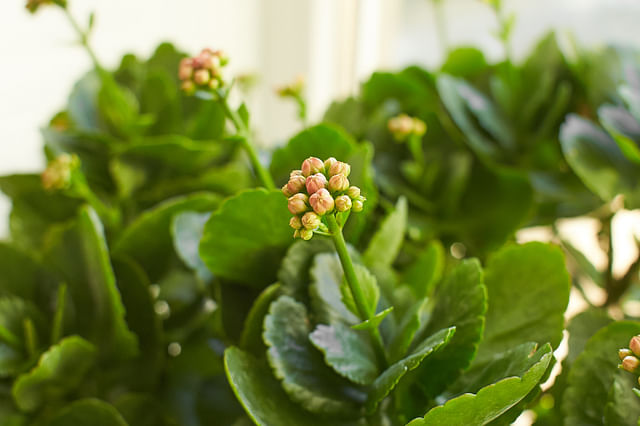
If you're looking for an easy way to help shape your Kalanchoe, you should try to prune it. The best time to prune your Kalanchoe is in the spring before new growth begins. Use sharp, clean shears to remove any dead or dying leaves, stems, and flowers.
Pruning is important for your plant's health because dead or dying foliage attracts pests. Leaves and stems that aren't quite dead yet, also use precious energy from your plant. By pruning these dead and dying stems/leaves, you help to give the energy back to your plant to grow new leaves.
Are there any specific pruning techniques for Kalanchoe plants?
But how do you prune your Kalanchoe? There are a couple of ways you can trim your plant to achieve varying results. Here are some specific techniques and practices for pruning Kalanchoe plants:
Pruning leggy growth
For leggy Kalanchoes, targeted pruning can help. Cut most of the stems off where they start to bend or appear leggy. This encourages the plant to grow more compactly and can also be a way to propagate new plants if you choose to plant the cuttings.
Pinching back
To promote bushier growth, pinch back the tips of the stems. This technique involves removing the very tips of the stems with your fingers or pruning shears, which encourages the plant to branch out.
Removing dead or dying flowers
After the Kalanchoe has finished blooming, remove the spent flowers. This not only keeps the plant looking tidy but also redirects energy to foliage and new blooms.
General maintenance pruning
Throughout the year, remove any dead or yellowing leaves to keep your Kalanchoe healthy and prevent potential disease issues.
Encouraging blooms
If your goal is to encourage more blooms, make sure to prune right after the flowering period. This gives the plant enough time to recover and start the process of producing new buds.
When you use these pruning techniques, you're keeping your Kalanchoe healthy, vibrant, and blooming. Remember, each cut guides the plant's growth, so prune with a goal in mind to shape and care for your Kalanchoe.
How can you propagate your Kalanchoe?
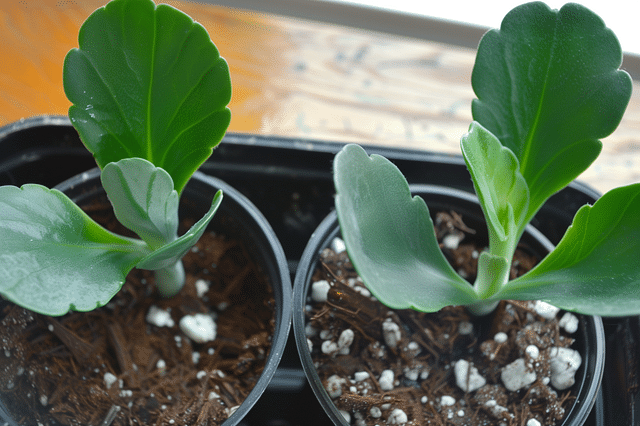
When you're pruning your Kalanchoe, you can also decide to take some cuttings to propagate your plant. Like many succulents, a Kalanchoe is easy to propagate! You can propagate your Kalanchoe by cutting part of the stem off, letting it dry in the (indirect) sunlight for 2 days, and then sticking it in the soil. After a few weeks, new roots will have started growing from the cutting and you'll have successfully propagated your Kalanchoe!
How often do I need to repot my Kalanchoe?
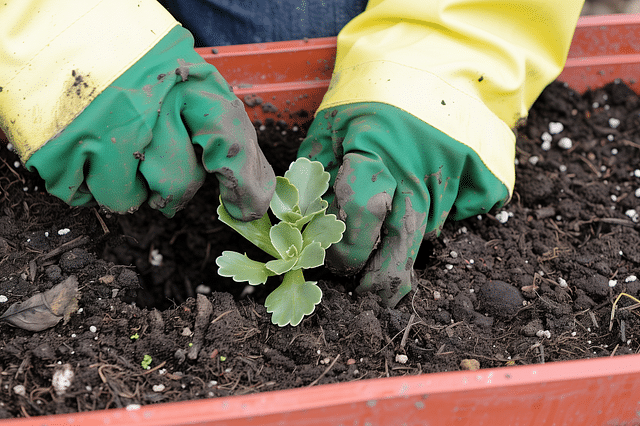
You'll need to repot your Kalanchoe every 2-3 years when the roots start to become pot-bound, or when the potting mix starts to decompose. Repotting a Kalanchoe is easy once you know what to do. Just remove the plant from the pot, loosen the potting mix with your fingers, and replace it in a new pot that's one size larger. Be sure to use a potting mix that drains well.
When repotting, make sure to acclimate your Kalanchoe to its new pot slowly over seven to ten days. To acclimate it to its new environment, place the Kalanchoe in a partially shaded area and water it sparingly at first. Gradually increase the amount of water you give it and move it to a brighter location over a week or two.
Be sure to only repot your plant to a pot that's one size larger and not more than that. If you repot your plant in a pot that's too large, it's easy to overwater your Kalanchoe. The extra soil will stay moist for much longer because your plant isn't big enough to absorb it all from the soil. This puts the roots at risk of developing root rot.
Troubleshooting common issues with Kalanchoe plants
Kalanchoe plants are famous for their colorful flowers and thick leaves. Even though they look stunning, these plants can run into a few hiccups. Check out these helpful tips to tackle common problems that might pop up with Kalanchoe plants:
Pest problems
Mealybugs, spider mites, and scale insects can be troublesome but are manageable. Wipe off mealybugs using a cotton swab dipped in rubbing alcohol. For spider mites and scale insects, rinse the plant under a gentle stream of water or use insecticidal soap, following product instructions carefully.
Stem rot and blackening
Stem rot often happens due to overwatering or poor drainage, which can lead to fungal infections. To tackle stem rot, reduce watering, enhance soil drainage with perlite or sand, and think about repotting the plant in fresh, well-draining soil. If the rot is severe, you might need to trim away the affected plant parts using sterile pruning tools.
Black stems may signal a peat-based substrate that holds too much moisture. Switching to a better-draining potting mix can help prevent this issue.
Overwatering indicators
Kalanchoes prefer their soil to dry out between waterings. If leaves turn yellow, it's a sign of over-watering. Allow the soil to dry completely before watering again.
Under-lighting symptoms
If your Kalanchoe shows pale growth or seems to be stretching towards the light, it needs more sunlight. Move it to a location where it can receive bright, indirect sunlight for at least 6 hours a day.
Diseases and rot
Too much watering, poor ventilation, and too many fertilizers can lead to root rot and other diseases. Make sure your Kalanchoe is planted in well-draining soil, reduce watering frequency, and ensure good air circulation around the plant. Use fertilizers sparingly and according to the product's instructions.
Leaf problems
To prevent issues such as powdery mildew, root rot, or systemic bacterial diseases, avoid wetting the leaves when watering, ensure adequate airflow around the plant, and use fungicides if necessary. Always quarantine new plants to prevent the spread of diseases.
Why has my Kalanchoe stopped blooming?
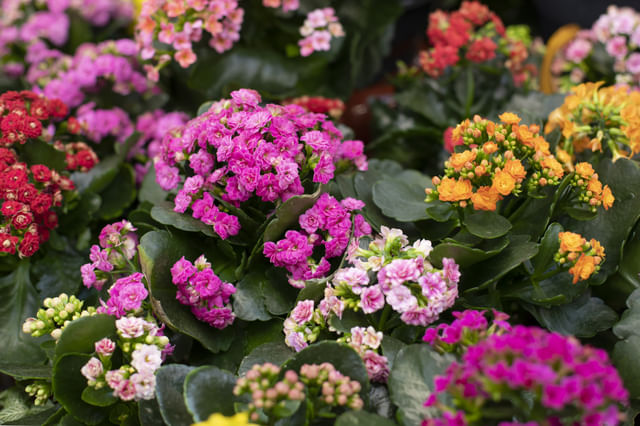
If you've been taking care of your Kalanchoe for a few months, perhaps even a few years, you might notice if your Kalanchoe stops growing. You've done everything right, but it just doesn't want to keep growing. But why?
There are a few reasons why your Kalanchoe may have stopped blooming. These are some of the reasons why:
- It's not getting enough sunlight
- It's not getting enough fertilizer
- It's too dry
- It's currently fall or winter
If it's currently fall or winter, your plant is resting and will start to bloom again in the spring. But if that's not the case, you can help your Kalanchoe to bloom again!
How can I get my Kalanchoe to bloom again?
You'll know your Kalanchoe isn't getting enough light if the plant starts to grow towards the light. If your Kalanchoe is getting enough light, the flowers will be straight up, because it's getting plenty of energy from the sun to grow. Your plant will look like it's stretched out. You can help it by putting it in a brighter spot. Just make sure it's not exposed to direct sunlight for more than 2 hours per day.
If it's currently spring or summer and your Kalanchoe is getting enough sunlight, you might need to fertilize your plant more. It's probably just starved for nutrients and will need a boost to start blooming again. Use a balanced houseplant fertilizer and apply it according to the package directions. It's best to fertilize your Kalanchoe every two to four weeks during the growing season.
Finally, your plant may just need a little extra love. Make sure you're watering it when the soil feels dry to the touch and pruning it in the spring to encourage new growth.
How can I support the growth of my Kalanchoe during the winter months?
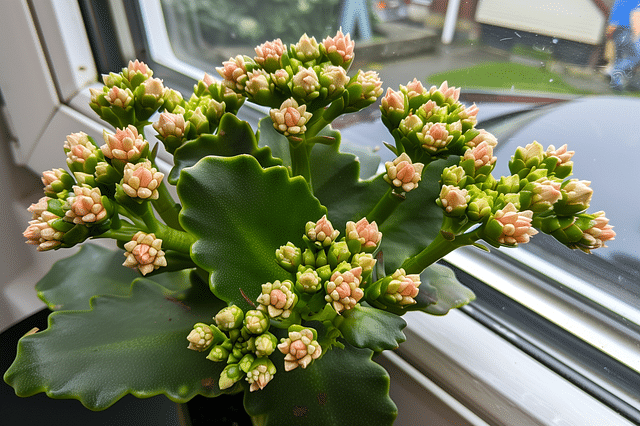
Looking after your Kalanchoe in winter involves tweaking your care routine to match the changing conditions. Make sure it gets enough light, either by positioning it near a south-facing window or using grow lights. Maintain a consistent temperature (55-80℉ / 12-25℃) and avoid sudden changes. Water less often, allowing the soil to dry out between waterings to prevent root rot. Keep an eye on humidity levels and use a humidifier if necessary. Skip the fertilizer during winter to avoid salt buildup. And don't forget to keep an eye out for any plant pests.
By making these adjustments and following these steps, you'll help your Kalanchoe thrive until spring when it starts to grow again.
Are there any common pests or diseases that affect Kalanchoe plants?
Kalanchoe plants, while generally hardy and easy to care for, can be vulnerable to several pests and diseases. Some of the most common issues that affect these succulents include:
Pests
- Mealybugs: These small, white pests weaken plants by sucking sap, causing stunted growth and yellowing leaves. They also leave honeydew that attracts ants.
- Aphids: These tiny insects mess with plant growth by sipping sap, resulting in curled leaves and yellowing. They make honeydew that leads to sooty mold growth.
- Scale insects: They latch onto plant stems or leaves, slurping sap and reducing plant vigor. These little brown bumps can cause weakened growth and yellow leaves.
- Spider mites: These almost invisible pests spin webs under plant leaves, leading to yellowing or bronzing of the leaves.
For more information on pest control, visit: The 7 most common houseplant pests and how to control them.
Diseases
- Powdery mildew: A fungal disease that appears as a white or gray powdery coating on the leaves, typically in humid conditions.
- Grey Mold (Botrytis): This fungus causes grey, fuzzy spots on leaves, stems, and flowers, especially in cool, damp conditions.
- Phytophthora Rot: A serious fungal condition that affects the roots and base of the plant, leading to wilting and collapse, often due to overwatering or poor drainage.
To keep pests and diseases in check, make sure you check your plants often for any early warning signs and deal with issues right away. If you spot any problems, isolate the affected plants to stop pests and diseases from spreading to your other plants. Also, remember to keep the environment well-ventilated, give your plants enough space, and water them properly to avoid diseases such as powdery mildew and grey mold.
Is the Kalanchoe toxic for pets or children?
Kalanchoe plants can be harmful to pets and children if eaten. Dogs and cats may experience stomach upset, vomiting, and diarrhea. It's best to keep these plants away to prevent accidental ingestion. Even small amounts can cause mild to moderate symptoms in pets, while larger quantities can lead to more severe effects.
For humans, especially children, there's a lower risk, but the plant's compounds can be harmful if eaten. They could potentially cause heart issues due to certain substances. To be safe, keep Kalanchoe plants out of reach of pets and children to avoid any health problems.
What are some creative ways to display Kalanchoe plants in my home?
Having Kalanchoe plants at home adds color and life, letting you express creativity with different decor styles. Check out these cool ideas:
Table decorations
Kalanchoes are great table decorations because of their small size and vibrant colors. You can arrange multiple Kalanchoe plants in a long, shallow container as a centerpiece for your dining table or living room coffee table.
White-themed spaces
Adding white Kalanchoe flowers to your decor can spruce things up! These plants are so versatile - they bring a touch of elegance and tranquility to any space.
Succulent gardens
Combine your Kalanchoe with other succulents to create a diverse succulent garden. Using a wide, shallow planter, you can create a miniature landscape of succulents that provides an attractive focal point in any room.
Festive container gardens
Incorporate festive themes into your Kalanchoe displays. For instance, pottery inspired by Cinco de Mayo can add a vibrant and celebratory mood to your indoor garden. This approach is perfect for adding a burst of color and festivity to your living space.
By exploring these creative ideas, you can find the perfect way to showcase your Kalanchoe plants and enhance the aesthetic appeal of your home. Remember, the key to a beautiful display is not just the plant itself, but how you choose to present it within your space.
Companion plants for a Kalanchoe
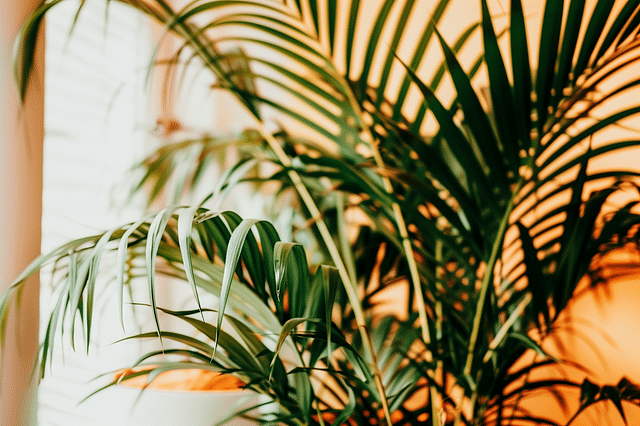
Pairing Kalanchoe with companion plants can create a visually appealing and harmonious display in your home or garden. While Kalanchoes prefer to be alone in small pots, several plants can complement them well when arranged together in a larger space or container garden.
Here are some companion plants that pair well with Kalanchoe for a visually appealing display:
Asparagus fern (Asparagus setaceus)
The delicate, feathery texture of Asparagus Fern contrasts nicely with the thick leaves of Kalanchoe, offering a light and airy backdrop. This pairing works well in a container where both plants can thrive under similar light conditions.
Areca palm (Dypsis lutescens)
The Areca palm provides a tropical feel and serves as a stunning backdrop for the vibrant colors of Kalanchoe flowers. Its tall, elegant fronds create a dramatic contrast, making it an excellent choice for indoor arrangements.
Succulents and cacti
Succulents like Echeveria, Sedum species, Aeonium, Sempervivum, and Graptopetalum offer varied textures, forms, and colors that complement the glossy leaves and bright blooms of Kalanchoe. These plants require similar care, making them ideal companions.
Herbs
Certain herbs such as Rosemary, Sage, Thyme, Oregano, and Lavender not only share similar sunlight and watering needs with Kalanchoe but also introduce an aromatic element to your plant display. The varying textures and colors of these herbs can enhance the visual appeal of your arrangement.
Croton (Codiaeum variegatum)
With its vividly colored leaves, Croton can add a splash of color that complements the bright flowers of Kalanchoe. Both plants enjoy bright indirect light, making them compatible companions in a shared space.
Bromeliads
Bromeliads provide a striking contrast in texture and form against Kalanchoe plants. Their colorful bracts and unique shapes can enhance the visual interest of your plant display, creating a vibrant and exotic look.
When you're pairing Kalanchoe with other plants, think about how they like to be taken care of to create a happy, flourishing display. Choose plant companions that enjoy the same light, water, and soil conditions to craft an arrangement that brings out the best in each of them.
Conclusion
If you're ready for beautiful colors on a plant that you don't have to spend a lot of time on, you're ready to take care of a Kalanchoe! Caring for a Kalanchoe is easy once you know what to do. Just be sure to give it bright, indirect sunlight, water when the soil feels dry to the touch, and fertilize every two to four weeks during the growing season. If you notice the leaves of your Kalanchoe starting to turn yellow, it's an indication that it's getting too much sun. Move your plant to a location with less direct sunlight. With these tips, your Kalanchoe will thrive in your house!
Thank you for reading this post! I hope it helps you to keep your plants healthy and beautiful! If you're looking for more guides on specific plants, you can always request a plant guide to get a guide for the plant you have trouble with.
Test your plant care knowledge
Quiz completed!
Want to learn more? Sign up for my newsletter to receive free tips in your inbox!
Sign up now!
